We move on now to my favourite type of photography. Wildlife. This is what I really enjoy when it comes to photography, especially in new places. There’s a degree of unknown that adds that little bit of excitement while you’re trying to capture something of the story or personality of the animals. There are things that are always transferrable though (more blogs on those later), and knowing the basic rules of composition, focus and of course something of the biology of your subjects is essential.
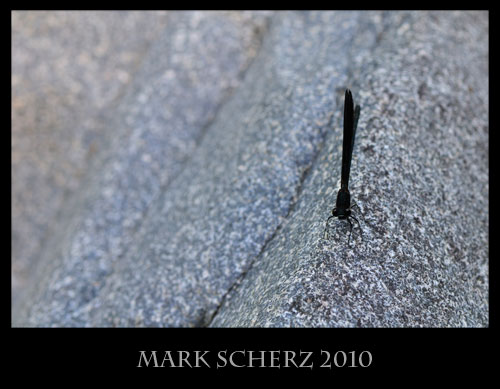
D300 + 105mm VR @ 1/100s f/7.1
Insects are the ultimate treasure trove when it comes to macro and wildlife photography. There are so many ways to capture them, and yet so few that are visually impressive enough to make it through at least my rigorous post checks. It is dependent on not only the sharpness (which is paramount) but also the composition. For example, if we take this shot:

D300 + 105mm VR @ 1/500s f/7.1
Sure it’s okay. It’s sharp. But I see two problems. Firstly, that background is awfully busy. And the composition? well, it’s awfully static. There’s no life to the shot. It’s also extremely central, which should usually be avoided (to taste). So let’s change up the composition a bit – bring a bit of personality to the demoiselle.
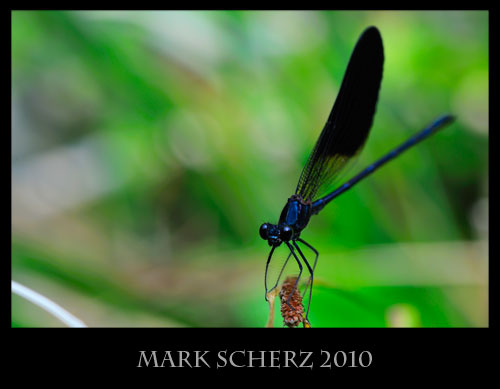
D300 + 105mm VR @ 1/50s f/7.1
That’s not too bad, is it? But we’re still shooting at f/7.1, and that background is just too busy. We’re also running out of light, and seeing as I was standing in a river to shoot this, 1/50s is pushing it when it comes to exposure speeds.

D300 + 105mm VR @ 1/60s f/3.5
Opening up the aperture to f/3.5, we not only get rid of that awful background, but also we isolate the demoiselle and make his colour really pop. Now all we have to do is pursue him, get closer and closer, learn his habits, and get the shots. Unfortunately all whilst losing light.
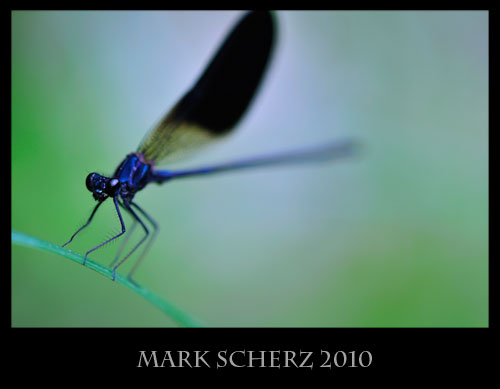
D300 + 105mm VR @ 1/125s f/3.5
Let’s leave the Copper Demoiselle now (more on photographing insects and the like in future posts) and move to my area of expertise. Unfortunately few people understand reptiles, and therefore there are only a select few photographers who focus on them (pun intended). If it were up to me, I would be photographing lizards and snakes all the time – I love working with them. They are predictable animals, and extremely cooperative if you know how to work them. Let’s take our first example, the Tyrrhenian Wall Lizard, Podarcis tiliguerta.
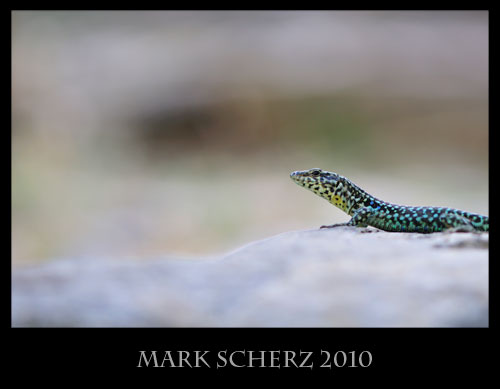
D300 + 105mm VR @ 1/200s f/3.5
Now i’m not going to go into the details of shooting reptiles just yet, because it’s better if I save that for future posts where I can go into it in detail. Just remember that point of view and framing are very very important, but persistence and observation will be what gets you the shot.

D300 + 105mm VR @ 1/200s f/3.3

D300 + 105mm VR @ 1/250s f/3.2
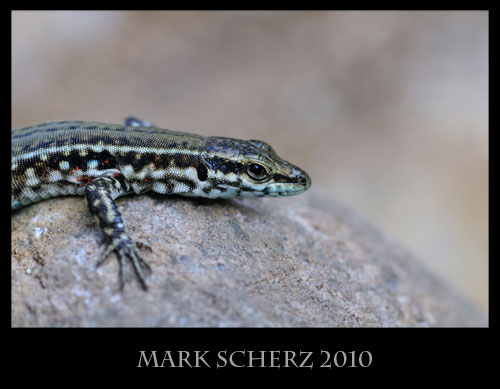
D300 + 105mm VR @ 1/40s f/8
It is only knowledge of subject and how to approach it that will let you get close enough for 1:1 macro work with a lizard that is completely wild.

D300 + 105mm VR @ 1/100s f/4.5

D300 + 105mm VR @ 1/80s f/4.5
Here too we can draw paralells with the thought process for shooting the demoiselle of course. We move on to my photoshoot with a beautiful male Bedriaga’s Rock Lizard, Archaeolacerta bedriagae.
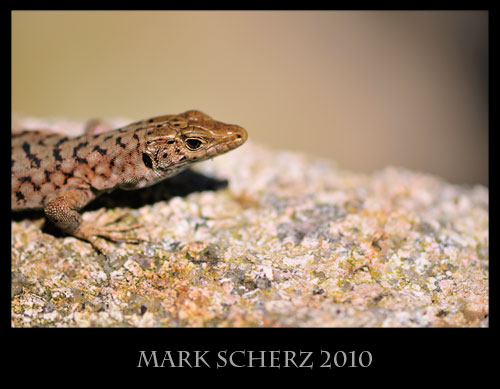
D300 + 105mm VR @ 1/3200s f/3.2
Headshots are all well and good, but they do little to tell us of the biology of the animal.
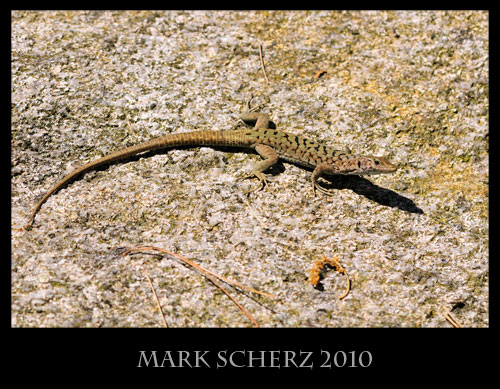
D300 + 105mm VR @ 1/800s f/6.3
A profile shot like this doesn’t really help though. Sure it shows us the full lizard, but really, it’s too flat – there’s no drama. This is a shot for a field guide, not for capturing something special about the animal. So again we move about, recompose, and work the subject.
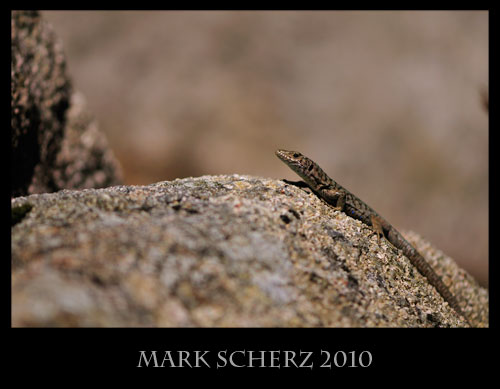
D300 + 105mm VR @ 1/8000s f/3
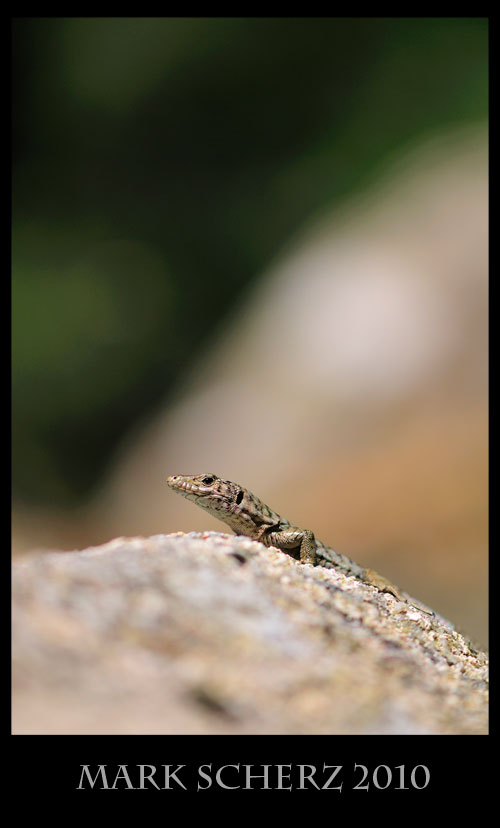
D300 + 105mm VR @ 1/3200s f/3
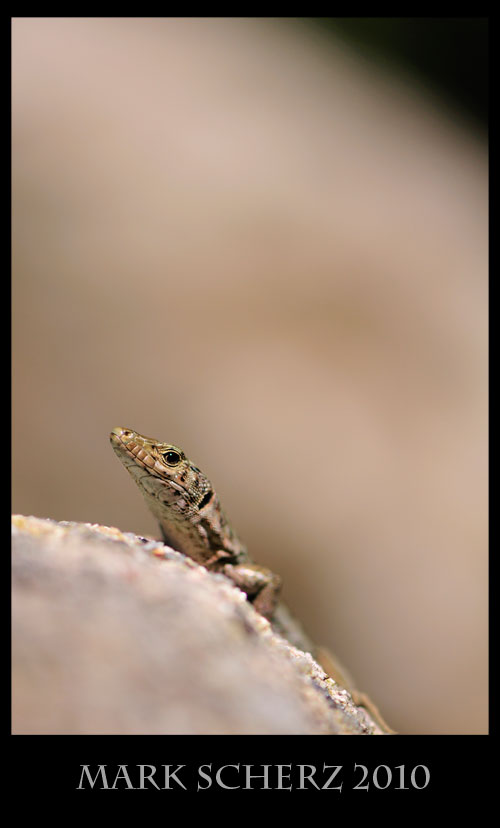
D300 + 105mm VR @ 1/3200s f/3.2
Somtimes, if you’re lucky, the subject will do something you didn’t expect, and you will have the presence of mind to capture it. This guy came up in a spot that was just too perfect. Click. Not a great shot, but decent at least.
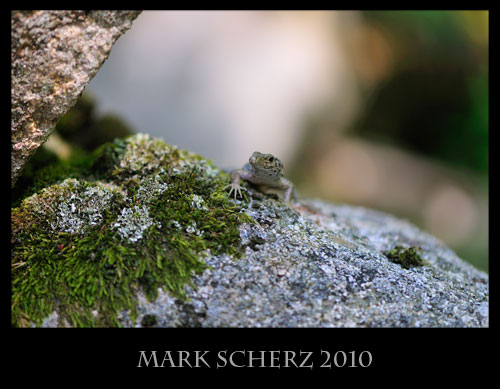
D300 + 105mm VR @ 1/160s f/3
So, we’ve covered demoiselles, lizards. What else is there besides fish on an island like Corsica? Well, birds. Lots and lots of birds. When we were driving to Porto (where we stayed; see the last post for shots of Porto) I saw out the window a pair of Bee-eaters sitting on some telephone lines. As much as I would have loved to shoot them, we never saw any again. There was however a large population of Gold Finches living right behind the beach of Porto.
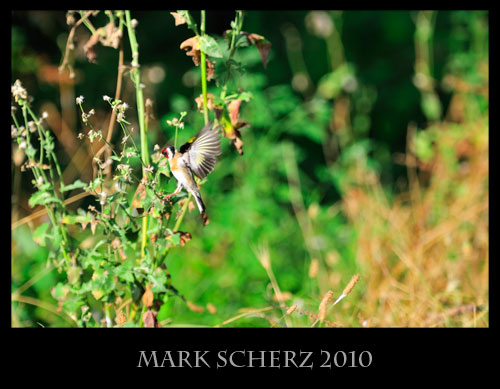
D300 + 300mm VR + TC-14E @ 1/640s f/4
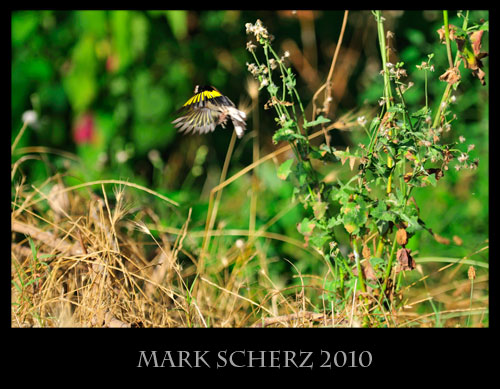
D300 + 300mm VR + TC-14E @ 1/800s f/4
They even came right up to the hotel.

D300 + 300mm VR + TC-14E @ 1/800s f/5.6
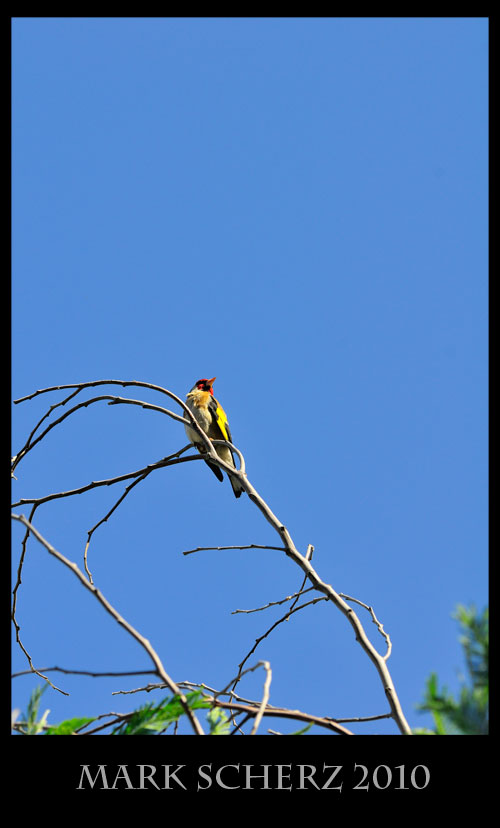
D300 + 300mm VR + TC-14E @ 1/500s f/7.1
When peoplare living this close to the birds, it becomes tough to keep them out of the shots. I don’t mean the people though, I mean their detritus. A plastic bag pretty well ruined the shoot with this finch:
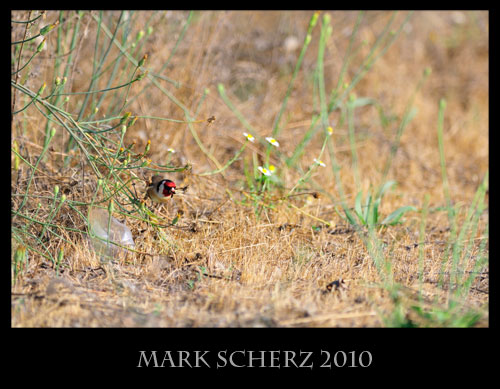
D300 + 300mm VR + TC-14E @ 1/640s f/4
Also, you notice how incredibly empty the frame is in all of these shots? This is the justification for the very next addition to my camera bag as soon as I can get hold of the thing that I want. I tried to get it before Corsica, but they appear to be sold out across Switzerland. Anyways, what other bird species did I get good shots of? Well, good is something else, but Yellow Wagtails were plentiful, and they are just the most enchanting birds. I sat down by the river the same afternoon as some of those gold finch shots, and just watched and shot them as they danced and pranced around, catching mosquitos and flies.
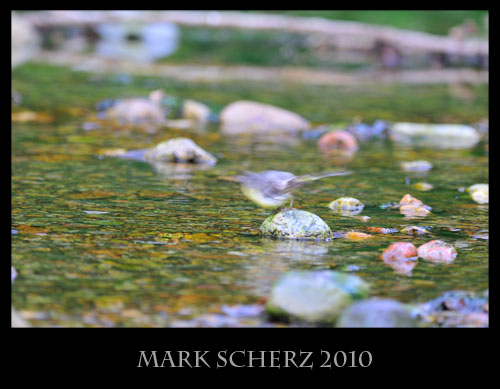
D300 + 300mm VR + TC-14E @ 1/50s f/4
Did I mention they’re fast? And never sit still? And I had almost no light? Yeah, conditions were against me.
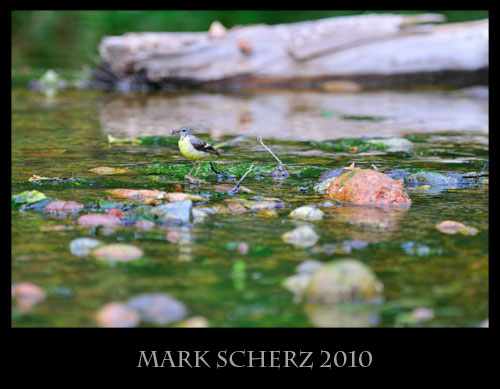
D300 + 300mm VR + TC-14E @ 1/60s f/4
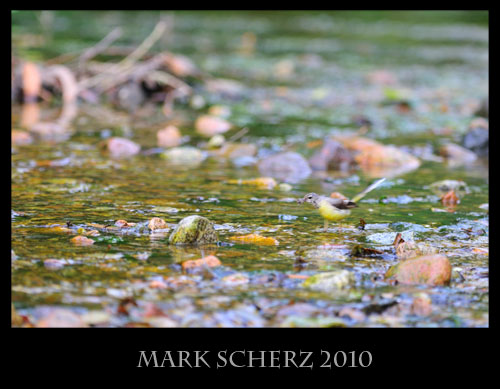
D300 + 300mm VR + TC-14E @ 1/50s f/4
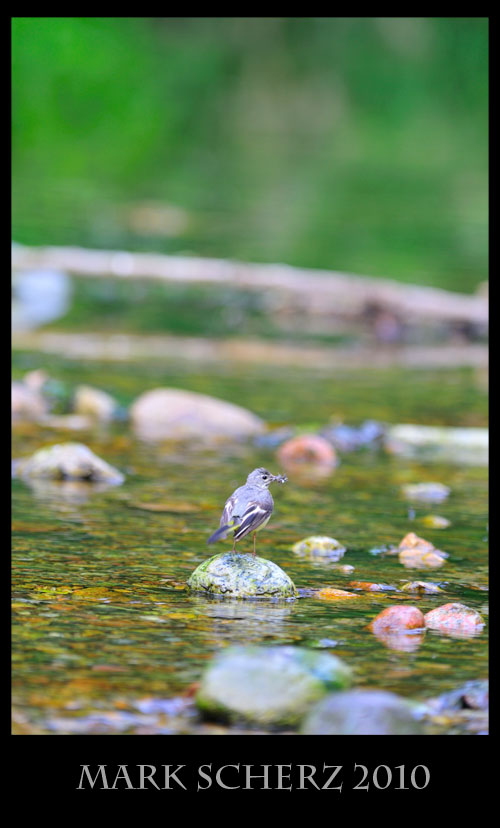
D300 + 300mm VR + TC-14E @ 1/40s f/4
I should have liked to spend much much more time with them.
Anyways, that concludes the shots from Corsica! I hope you enjoyed seeing them as much as I enjoyed taking them. New and exciting material for the next few posts, so stay tuned on that count.
Keep clicking!


Once again I stumbleuponed your website! Love Love Love these photos Mark. Keep up the amazing work 🙂
Its a great post.i wii definately share it with my friends. I Like It. so Much.
I ran across your site a few days ago. Beautiful photos! I especially love the lizards.
Thanks 🙂 Glad you like it!
Thank you so much for this wonderful information
Hey Mark, great looking at your blog – some great posts there. By the way, that’s a grey wagtail, not a yellow wagtail. Yellow wagtails are very very yellow! (grey wagtails have the grey back and yellow front, and frequent streams)
thanks Paul! Can’t believe I made that mistake. My bad. haha.